Probably one of the most well known massive rock formations worldwide, Uluru, or Ayers Rock, is an incredible Australian sightseeing objective. Apart from the view it offers to those who visit the Uluru-Kata Tjuta National Park – particularly during sunsets – Uluru is over 600 million years old, which makes it one of the oldest rocks existing today.
Due to the climate of the area, it only rains a few times per year in that area. However, when it does start raining, those who are lucky enough to watch the show are amazed by its beauty. After each storm, the large quantities of water run off from the top of the rock, creating the illusion of small waterfalls. Furthermore, once the rock gets wet by the rain, its color turns from grey to various shades of red, dark red and brown.
Unfortunately, the show doesn’t last for long, so each time it happens, tourists hurry up to take photos and enjoy the event. As most of them claim, it is an unforgettable experience, as there are dozens of seemingly thin waterfalls flowing to the bottom of the rock.
In order to get to Ayers rock, one must travel for over 300 kilometers from the nearest large city, Alice Springs – and, unless it starts raining, extreme temperatures in the area can go up to 40 degrees Celsius. But even so, the number of tourists who come to visit the place is constantly increasing due to local animals such as the rock-wallaby, unique plants and even petroglyphs.
Kerrie Bennison, the manager of the Uluru-Kata Tjuta National Park, has been working there vor over 8 years. As she claims, ‘You don’t see this sight very often, only a couple of times a year if you’re lucky.’
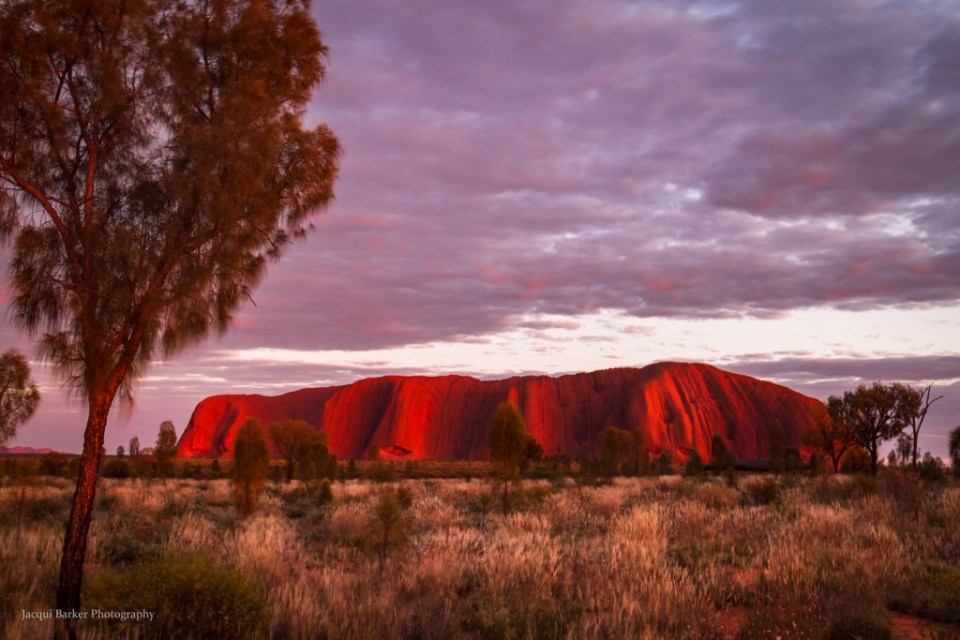
Photo by Jacqui Barker/Flickr
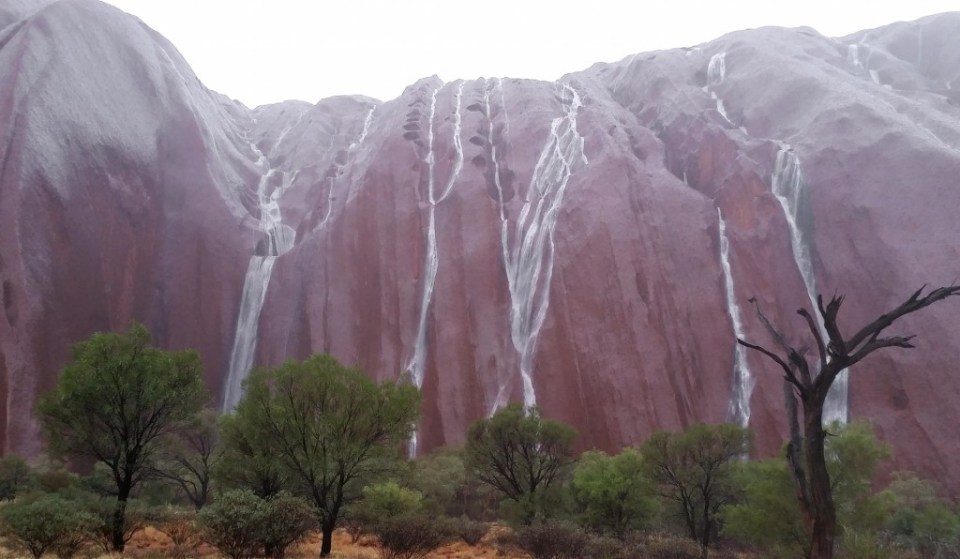
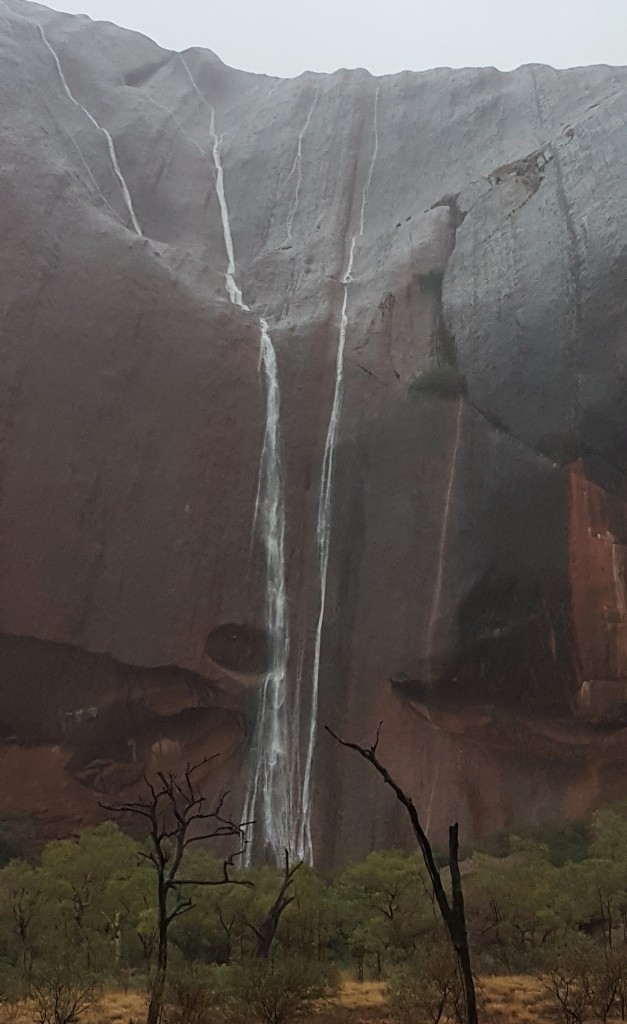
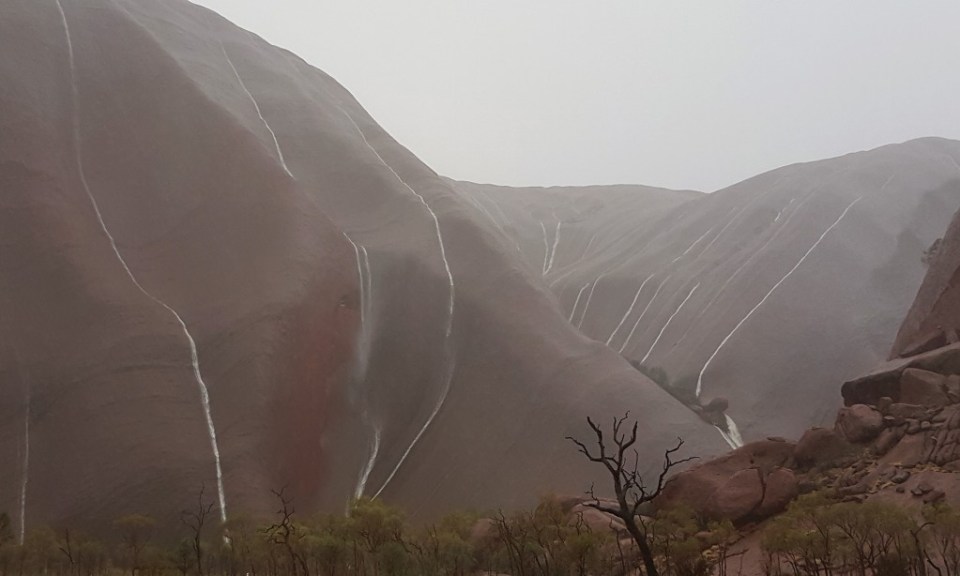
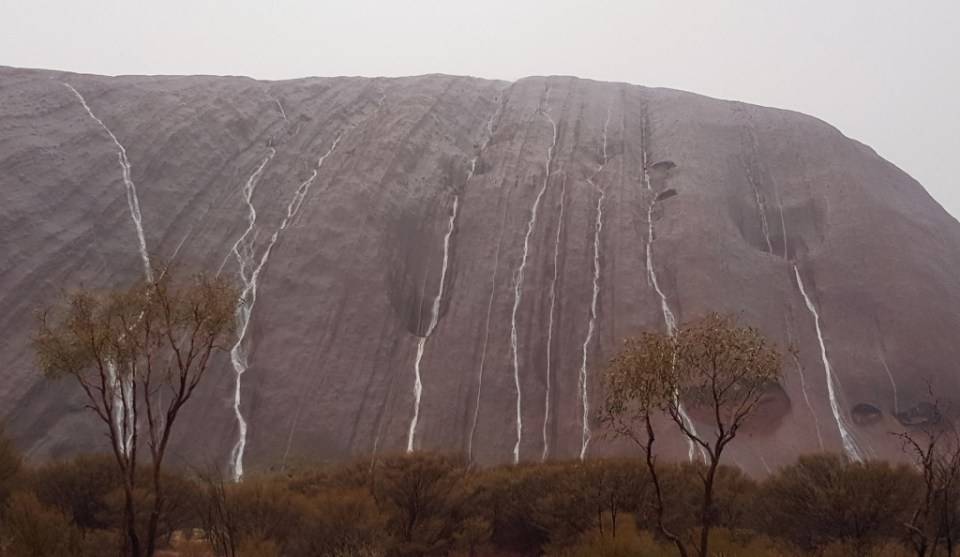
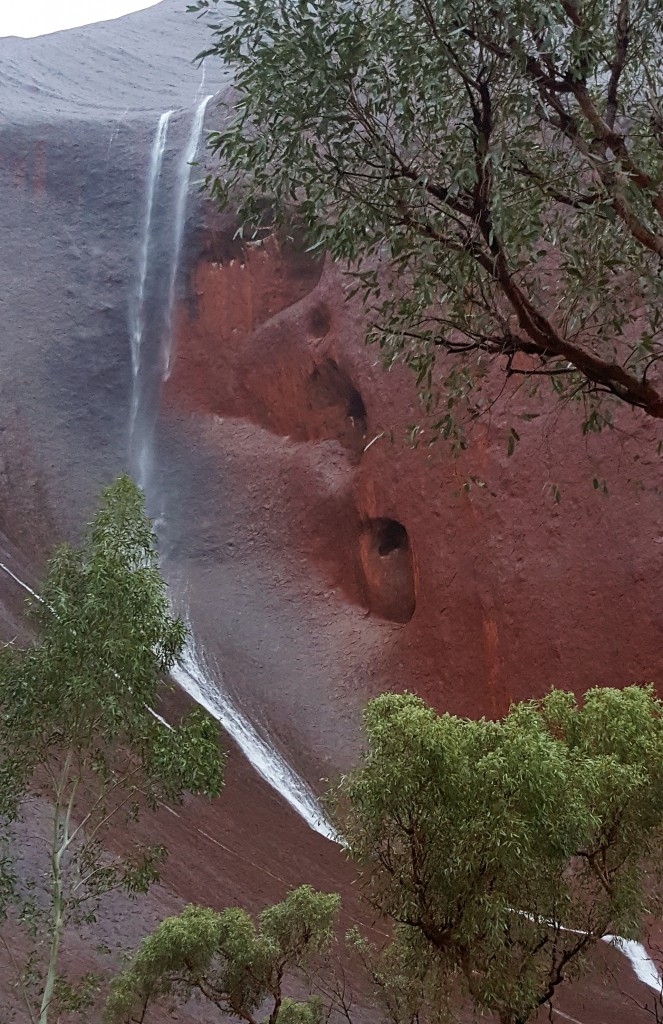


Sunset at Uluru (Ayers Rock) Photo via Instagram.
Source: unusualplaces.org





